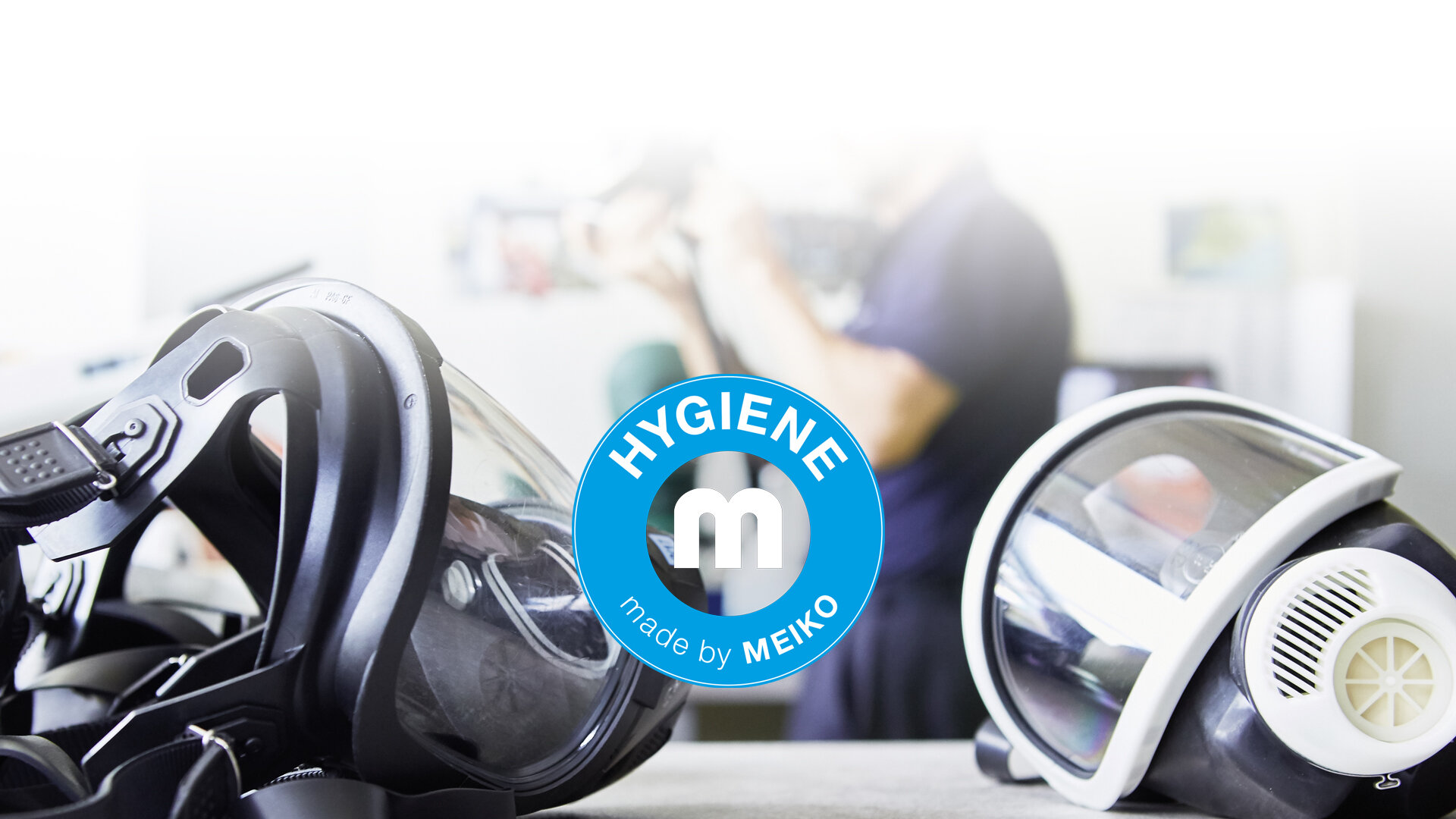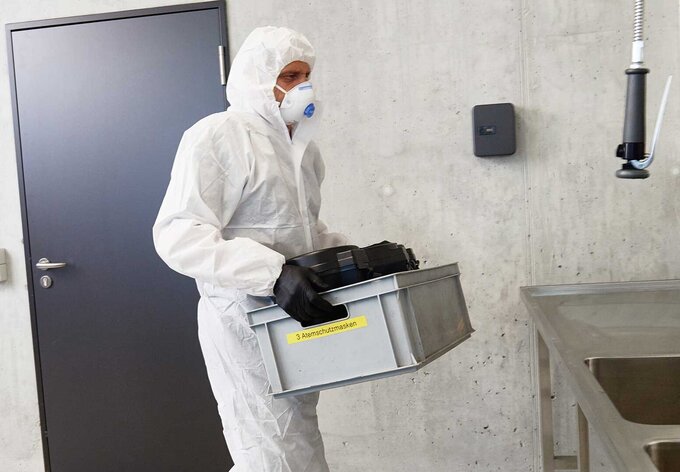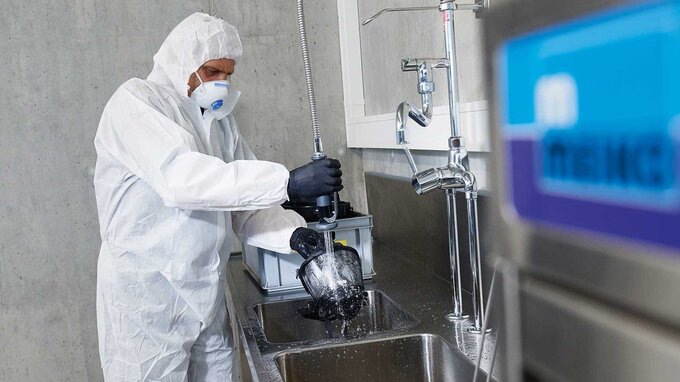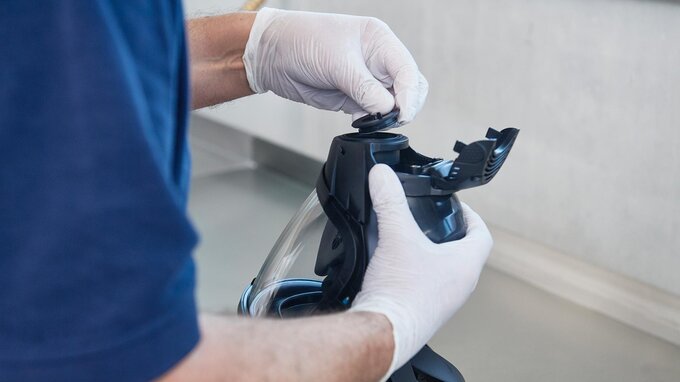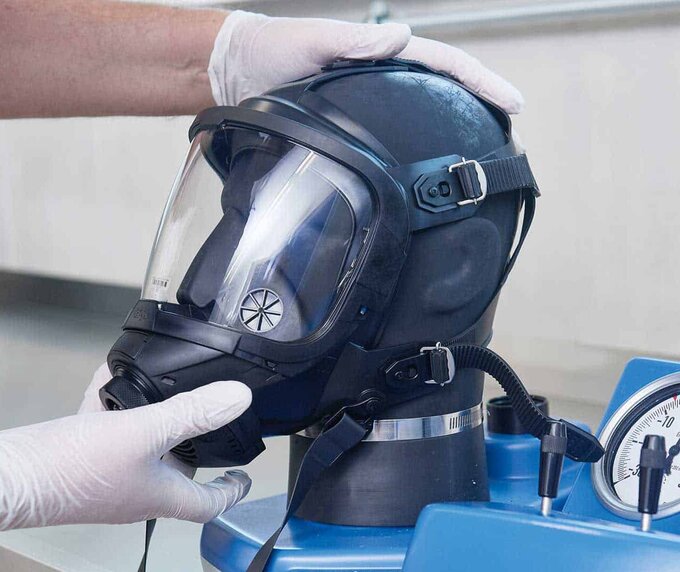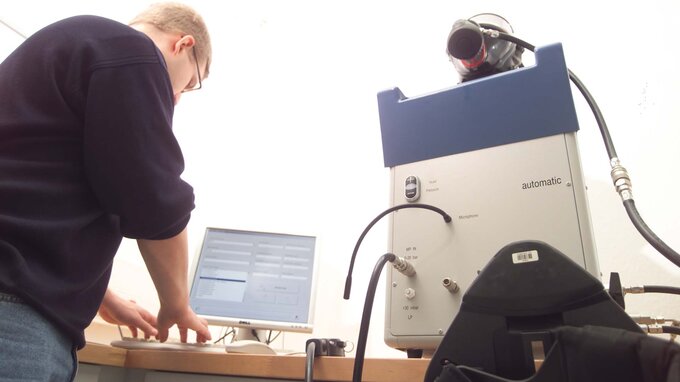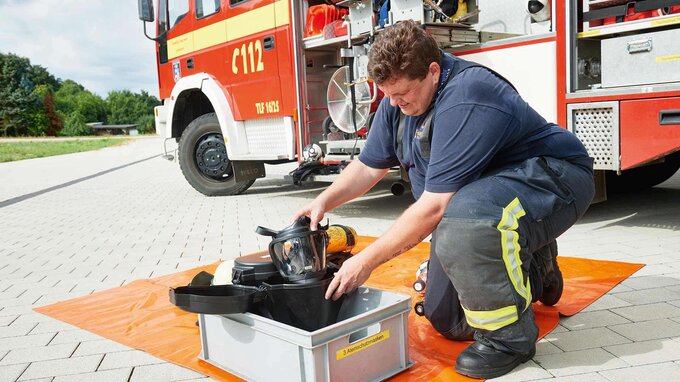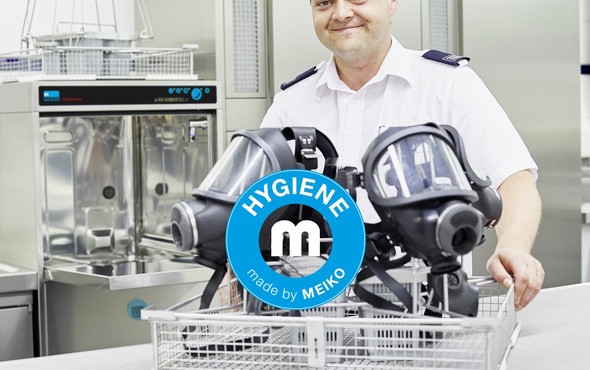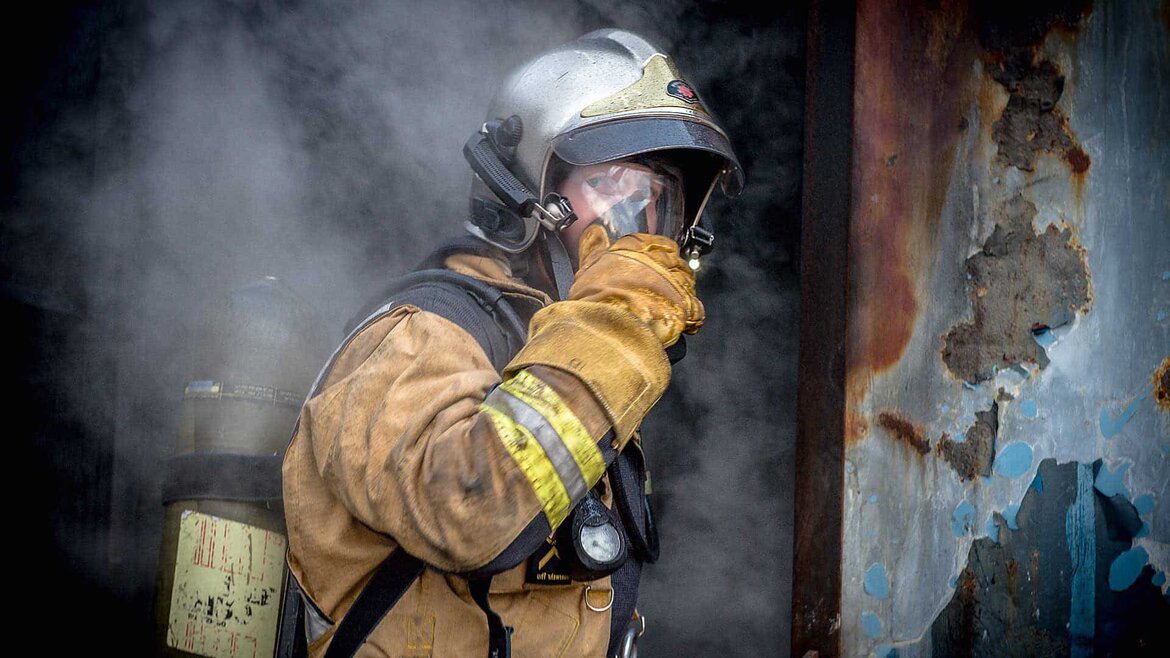
Personal safety precautions
This term refers to all the precautions respiratory protective equipment technicians do to protect them against contamination from internal sources (e.g. bacteria) and external sources (e.g. combustion by-products) on personal protective equipment. Information on the type of contamination can be obtained directly from the on-scene commander (e.g. what exactly burned in the fire?). This is the basis for choosing which personal safety precautions should be taken.
HERE IS HOW THE PROPER WORKFLOW IN A RESPIRATORY PROTECTIVE EQUIPMENT WORKSHOP LOOK LIKE
1. Receipt
Deliver contaminated full face masks and SCBAs in the dirty area. These are usually contaminated with fire smoke and soot. Contamination also occurs inside full face masks and SCBAs due to mask wearers' exhaled air, secretions, saliva, and flaking skin.
Contamination risk requires respiratory protective equipment technicians to wear personal protective equipment depending on type of hazard.
Prepare documentation for each piece of equipment.
Dispose used respiratory filters as hazardous waste or return to their respective manufacturers.
2. Preliminary clean
- Pre-clean heavily soiled equipment by washing it off with clean water in the dirty area.
- Contamination risks require respiratory protective equipment technicians to wear personal protective equipment depending on type of hazard.
3. Dismantling
Separate full face masks and SCBAs in the dirty area. Respiratory protective equipment technicians may need to wear personal protective equipment depending on type of hazard. Safety gloves required as a minimum.
- Full face mask
Disassemble prior to washing in the machine. Follow manufacturer's instructions on use and maintenance.
Remove spectacle inserts and clean them separately.
Place the disassembled components into the appropriate small part racks of the TopClean M to ensure they can be matched to the correct mask after washing.
- SCBA regulator
Detach the regulator's medium pressure connector from the complete medium pressure line.
Follow instructions for use and maintenance set by SCBA manufacturer after disassembly, then place the small parts in the small parts rack.
Place items in the rack insert in the correct positions.
Connect the medium pressure hose to the ring line on the TopClean M rack insert. Set connection to medium pressure when inserting rack to prevent ingress of detergents, rinsing fluids, and disinfectants.
- SCBA with pneumatics assembly
Seal pneumatics assembly (e.g., pressure regulator, manual connector for compressed air cylinder and safety valve) according to the manufacturer's instructions.
Secure SCBA harness in rack.
4. CLOSED-LOOP CLEANING + DISINFECTION
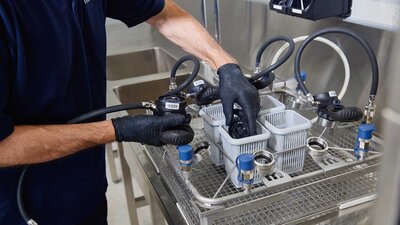



- Observe separation between dirty and clean area:
- Dirty area: Insert loaded rack.
- Clean area: Close the TopClean M, select the appropriate program, then start the process. Open machine when finished and remove decontaminated respiratory protective equipment and its small, disassembled parts.
- The mask cleaning machine operates automatically. Depending on the selected program, it runs through a thorough "clean–rinse–disinfect–rinse" cycle or a thorough "clean–disinfect–rinse" cycle at +60° C.
- Clean, disinfect, and rinse accessories such as mask cases.
- Respiratory protective equipment technician should wear safety gloves to protect the respiratory protective equipment during handling.

5. Drying
Respiratory protective equipment technician should wear safety gloves to protect the respiratory protective equipment during handling.
Remove the cleaned, disinfected, and rinsed respiratory protective equipment. It does not need to drip-dry thanks to the effect of the residual +60° C heat.
Place respiratory protective equipment in the drying cabinet while it is still warm from the residual heat.
- Dry at maximum temperature of +60° C
6. Reassemble, replace
- Respiratory protective equipment technician should wear safety gloves to protect the respiratory protective equipment during handling.
- Replace SCBA components such as valve disks, exhalation valves, and full face masks according to manufacturer's instructions for use and maintenance and vfdb guideline 0840 (previously 0804).
- Assemble set according to manufacturer's instructions.
7. Maintenance, repair, inspection
- Respiratory protective equipment technician should wear safety gloves to protect the respiratory protective equipment during handling.
- Repair as required. Components that operate under high pressure such as pressure regulators should be repaired by experts (e.g., manufacturer).
- Reassemble sets according to manufacturer's instructions for use and maintenance, guidelines on replacing parts, and vfdb guideline 0840 (previously 0804).
- After carrying out a proper inspection, seal the full face masks and regulators in plastic bags separately to maintain hygiene. Ensure air can enter bags by cutting off its corners.
- Regularly disinfect the test probes and work surfaces of the respiratory protective equipment workshop. Disinfect gel probes as per manufacturer's instructions and keep regular documentation of completed disinfection processes.
8. Fill cylinders
- Fill breathing air cylinders at filling panel/rig (use of safety filling systems is preferable)
- Ensure breathing air meets quality standards stipulated in DIN EN 12021, check, and document regularly.
Filling speed for carbon composite compressed air cylinders: see manufacturer's specifications.
10. Storage and issue of equipment
- Store according to manufacturer's instructions for use and maintenance and vfdb guideline 0840 (previously 0804).
- Where possible, seal full face masks in plastic wrap (making sure air can still enter the bag) and store them in mask cases.
- Storage conditions as per DIN 7716 and DIN ISO 8331 (Rubber products; requirements for storage, cleaning and maintenance).
